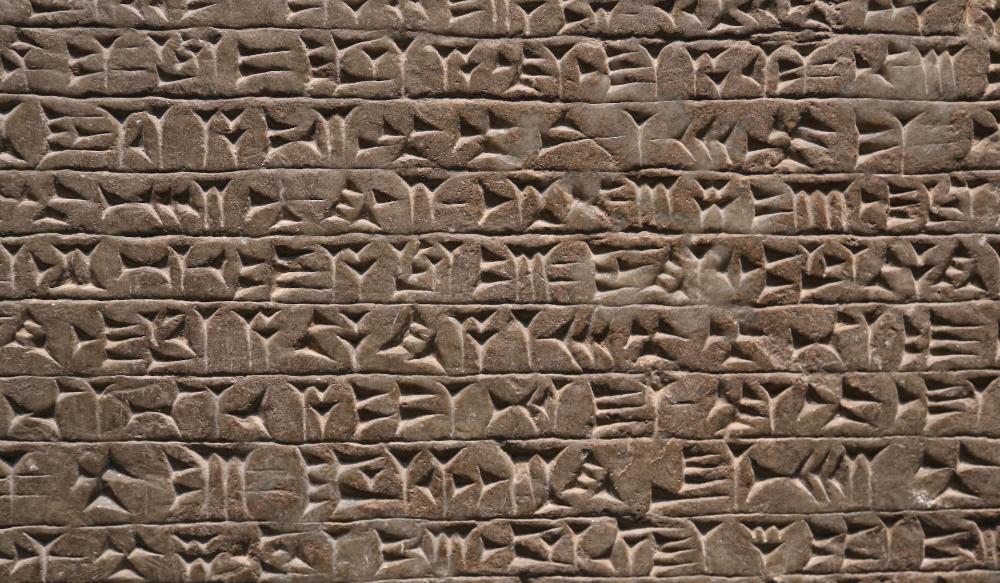
- Cuneiform
- wet clay and carvings, read down and right to left
- mainly used for lists and inventory, but also first poetry
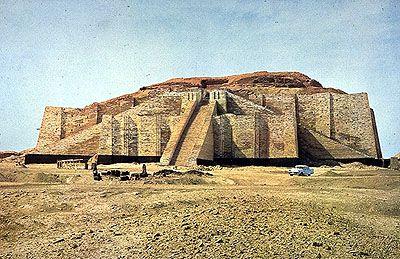
- White temple and ziggurat (platform)
- 3300-3000BCE
- Mud brick medium
- Cities built around dieties
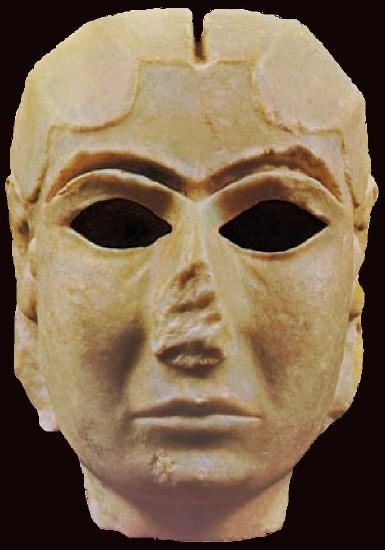
- Female Head (Inanna)
- 3300-3000BCE
- Marble, wig of gold
- Different offerings (votives=gifts) to her, goddess of love and war.
- Stolen in 2003
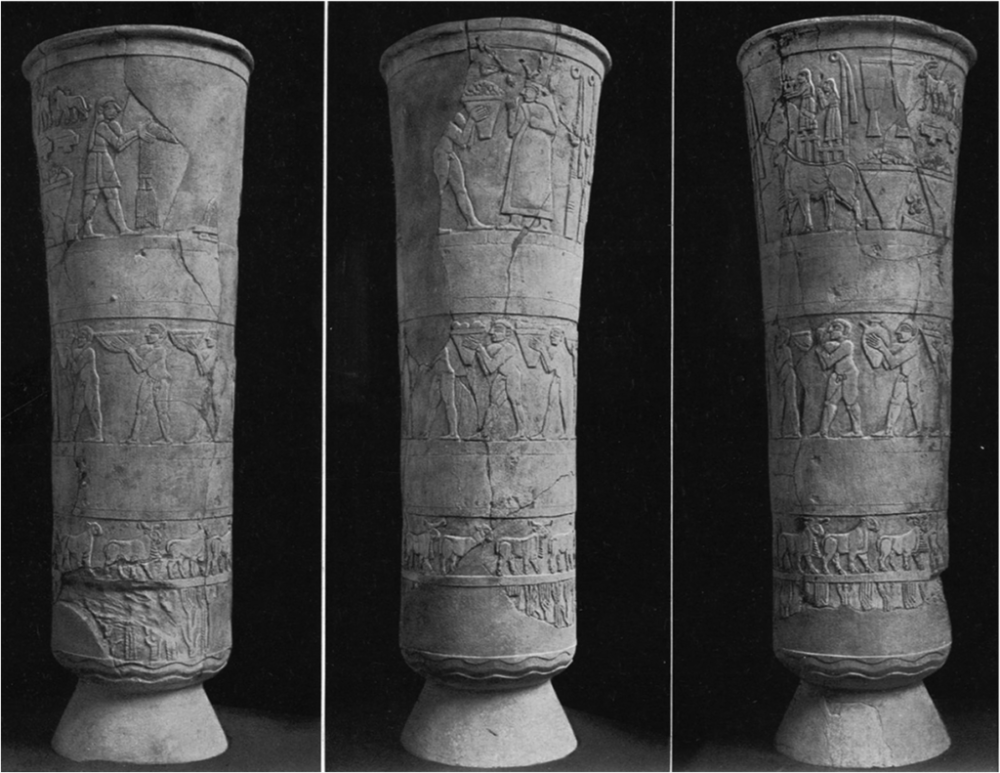
- Presentations to Inana (Worka Vase)
- 3300-3000BCE
- Alabaster
- Top is the most important people to the least important, now have a groundline. Vase depicting a festival
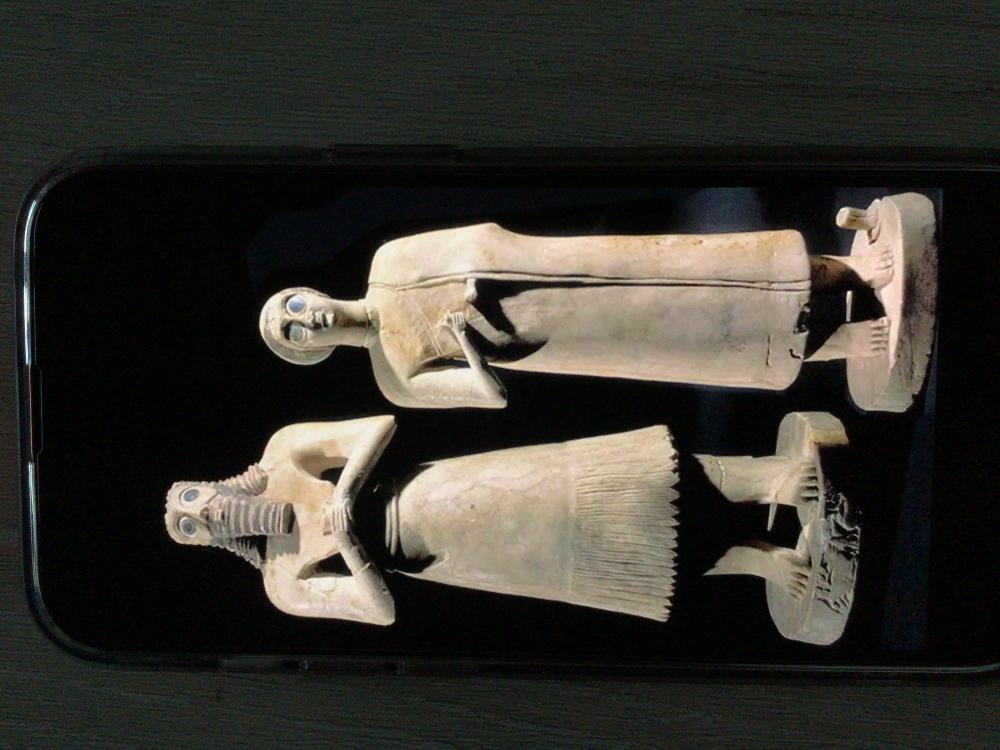
- Statuettes from the Square Temple at Eshnunna
- 2900-2600BCE
-Gypsum, shell, and black limestone. 12-30"
- Praying figures, large eyes to show awakeness and moment of prayer
- focus on religion, commissioned to stay at the temple to pray 24/7
- texture of hair and beard is unique to the Mesopotamian era
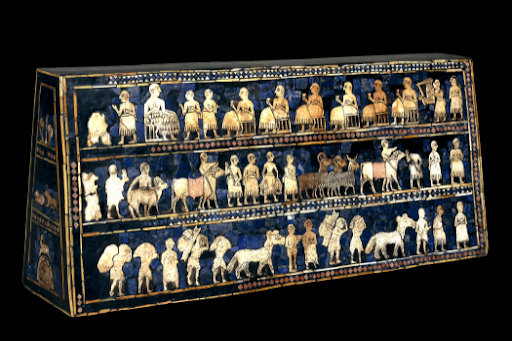
- Standard of Ur, Peace Side
- 2600-2400 BCE
- wood, lapis lazuli, shell, and red limestone
- Found in a grave, has a peace side and a war side
- Registers (narrative), king showing mercy on war side, prisoners of war (naked to humiliate), and warriors on chariots on bottom register
- top bar of peace side is king and nobles (luxury to sit), the farmers, then slaves
- shows how society works in Meso bc king shows mercy is you ask
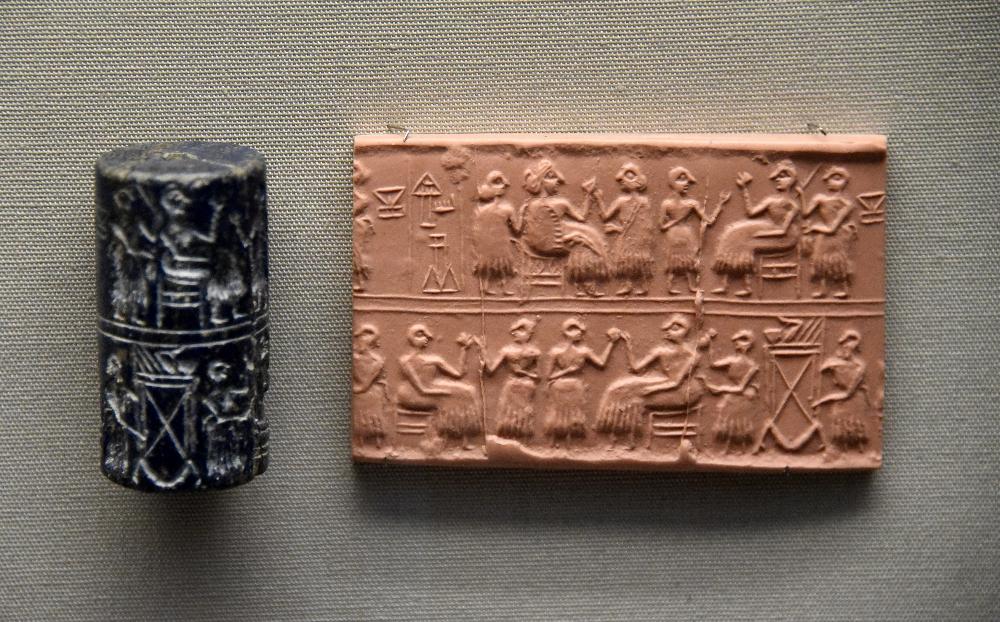
- Banquet Scene, cylinder seal
-2600-2500BCE
- Lapis lazuli
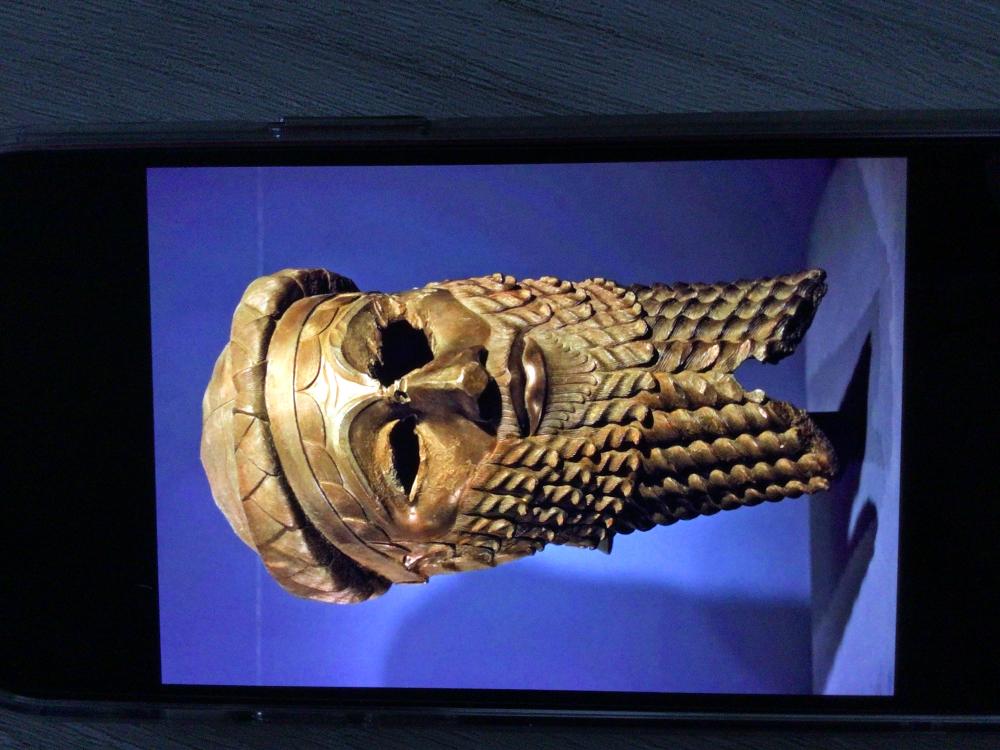
- Head of Akkadian Ruler
- 2300-2200BCE
- Copper, would have had gems as eyes, possible vandalism
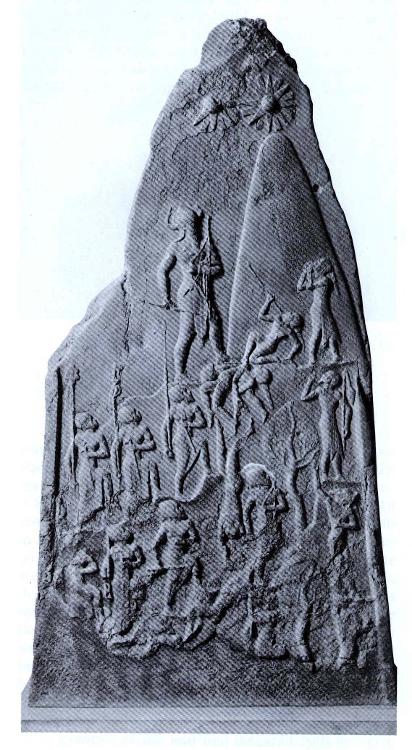
- Victory stele of Nuram-Sin
- 2254-2218BCE
- Pink sandstone
- 6'7" high
- First sculpture to celebrate victory of other people, hierarchy of scale with sin being the largest figure
- Cuneiform
...
- Nanna Ziggurat
- 2100-2050BCE
- Mudbrick Ur Ziggurat
- Reconstructed, platform for temple to sit on. People worshipped at the bottom, high priests and royalty could go in
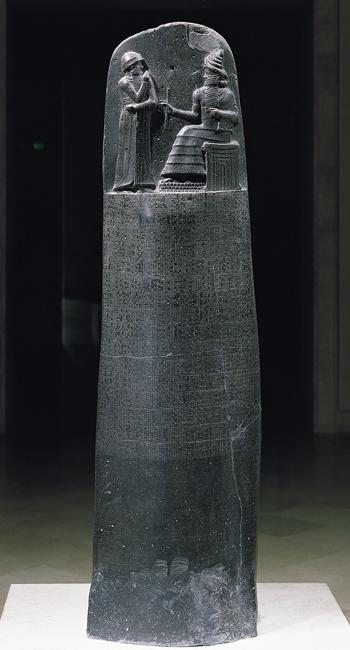
- Stele of Hammurabi
- 1792-1750BCE
- Basalt
- Cuneiform, Babylonian King and his relationship with the sun god
- legal text
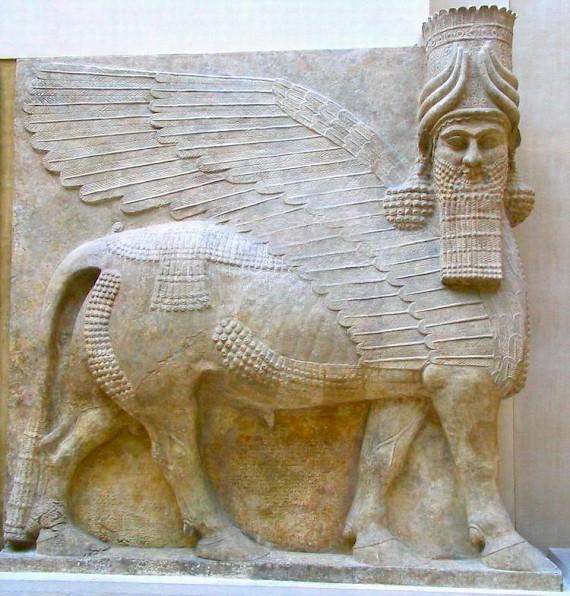
- Lamassu
- 721-706BCE
- Gypsum, 13'10" tall
- Body of bull (strength, power), eagle wings (quick movement, freedom), gead of man (knowledge)
- Like saying that you should be afraid of the king's might and wealth in the city
- direct to Mesopotamia bc of rhythmic, intricate details
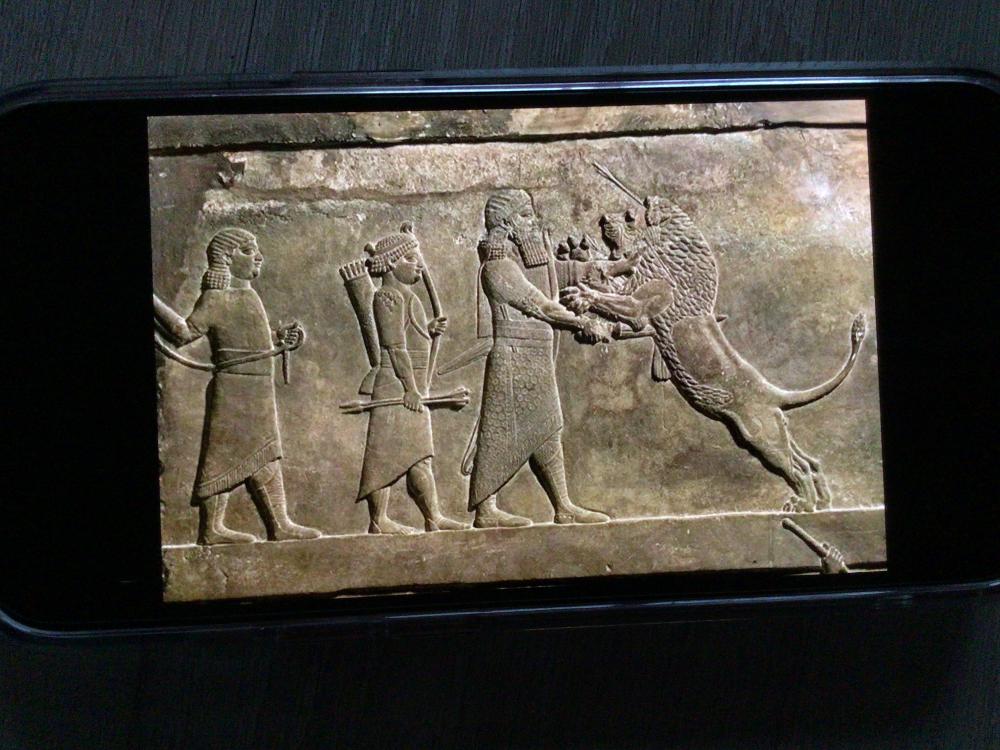
- Ashurbanipal Hunting Lions
- 645-640 BCE
- Gypsum
- First time people were shown hunting for sport rather than food/life
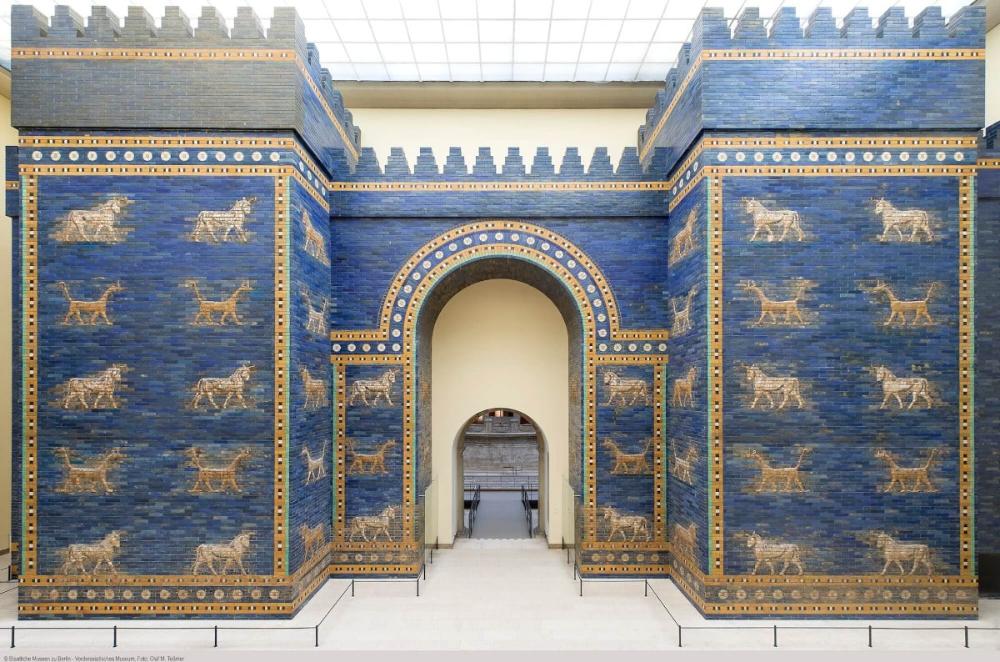
- Ishtar Gate
- 575 BCE
- Glazed bricks (gold and blue), 40'
- lion is Ishtar, bull is Adad, murbak and nabu is dragon. dragon is a composite creature so protective and fearsome.
- crenulations on top, used to shoot and hide
- Babylonian depictions of dragons and bulls and lions
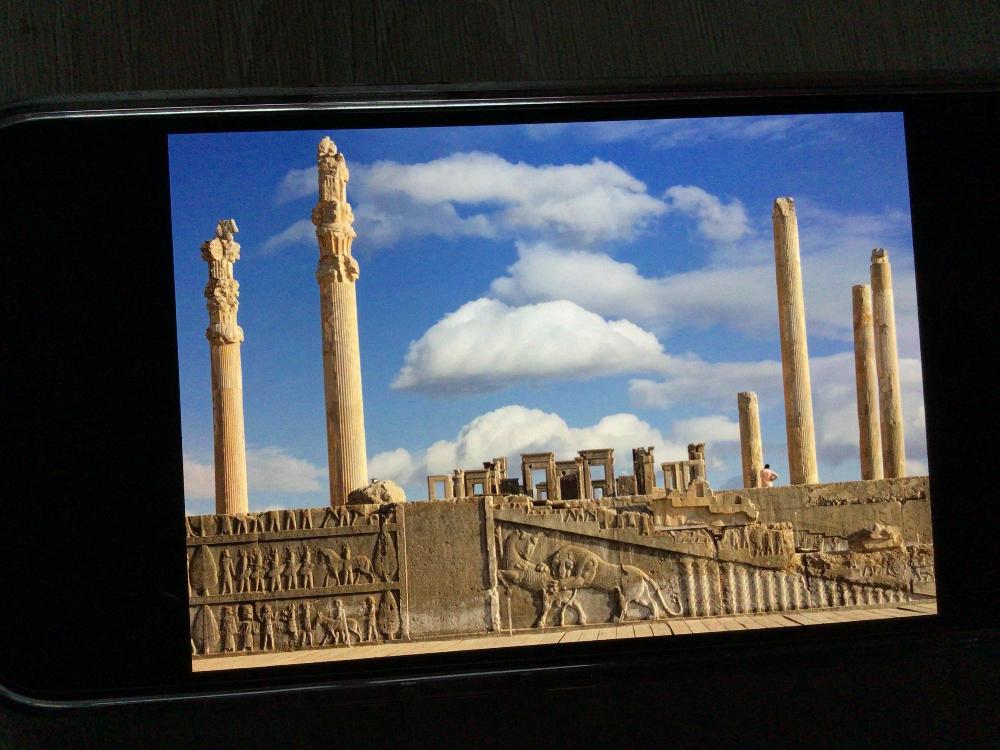
- Persepolis
- 518-460BCE
- Influence from Greeks, true profile
- important source of knowledge, figures are more rounded than naturalistic, lots of statesmen depictions and carrying gifts (sign of power and respect for the king)